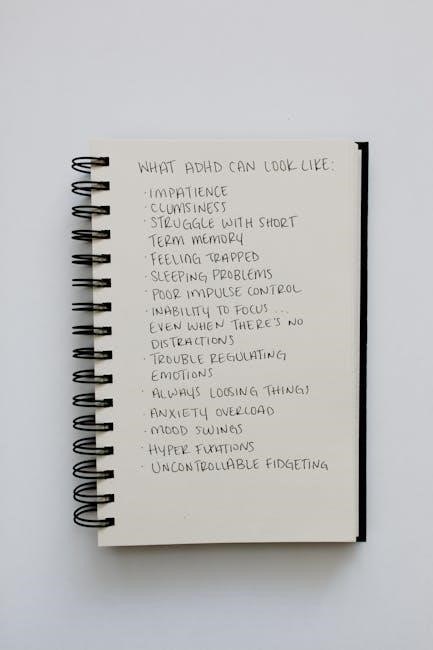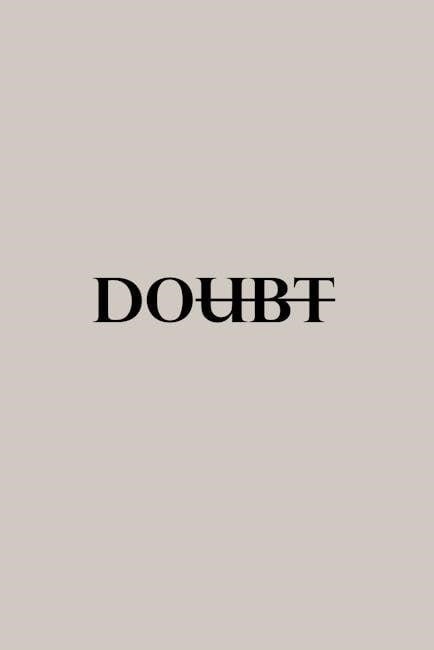What Are CVC Words?
CVC words are three-letter words following the consonant-vowel-consonant pattern, such as “cat,” “dog,” or “bug.” They are fundamental for early reading skills, focusing on phonetic awareness and blending sounds to form meaningful words.
Importance of CVC Words in Early Reading
CVC words introduce basic reading concepts, helping learners recognize sound patterns and build fluency; They are essential for developing foundational literacy skills and confidence in young readers.
These words are often used in educational resources, including PDF lists, to provide structured practice for students. Organized by vowel sounds, they simplify the learning process and make reading engaging for beginners.
CVC words are three-letter words that follow the consonant-vowel-consonant pattern. Examples include “cat,” “dog,” and “bug.” These words are foundational for early reading skills, as they introduce basic sound patterns and phonetic awareness. CVC words are often used in educational materials, such as PDF lists, to help students practice blending and segmenting sounds. They are simple yet effective for teaching young learners to recognize and pronounce words confidently. By focusing on one vowel sound between two consonants, CVC words make reading accessible and engaging for beginners. They are a cornerstone in literacy education, providing a clear structure for understanding how sounds combine to form meaningful words.
CVC words play a crucial role in early reading development by introducing foundational phonetic patterns. They help learners recognize the relationship between sounds and letters, making decoding simpler. CVC words are essential for building phonemic awareness, as they allow students to practice blending and segmenting sounds effectively. Their simplicity makes them ideal for young readers to grasp basic reading concepts confidently. Regular practice with CVC words, often through structured PDF lists, enhances fluency and reinforces vowel sounds. These words are also versatile, supporting various teaching methods and activities that cater to different learning styles. By mastering CVC words, students lay a strong foundation for more complex reading skills, making them a vital tool in early literacy education.

Structure of CVC Words
CVC words follow a consistent consonant-vowel-consonant pattern, making them easy to recognize and decode. This structure helps learners understand basic sound-letter relationships, aiding in early reading development. PDF lists organize these words by vowel sounds, simplifying practice and teaching.
Consonant-Vowel-Consonant Pattern
The consonant-vowel-consonant (CVC) pattern is a fundamental structure in early reading, consisting of three letters: a beginning consonant, a medial vowel, and a final consonant. This pattern is common in many simple English words, such as “cat,” “dog,” and “bug;” The CVC structure is significant because it introduces learners to basic phonetic principles, helping them understand how sounds combine to form words. In PDF resources, CVC word lists often categorize words by their vowel sounds, making it easier for educators and parents to teach and practice reading. This organization allows learners to focus on specific vowel patterns, aiding in sound recognition and blending. The CVC pattern also supports the development of phonological awareness, enabling readers to segment and manipulate sounds within words. By mastering this structure, learners build a strong foundation for reading fluency and comprehension.
Examples of CVC Words
CVC words are simple three-letter words that follow the consonant-vowel-consonant structure. Examples include cab, hed, sit, mog, and cup. These words are foundational for early readers, as they introduce basic sound patterns. Many CVC words are found in free, downloadable PDF lists, categorized by vowel sounds. For instance, short “a” CVC words include cat, bag, and tap, while short “e” examples are pet, bed, and get. Short “i” words like hit, kid, and sit are also common. Other examples, such as dog, sun, and big, demonstrate the variety of CVC words available in educational resources. These examples are often included in printable PDF formats to aid in teaching and practicing phonics.

Categories of CVC Words
CVC words are categorized by vowel sounds, including short a, e, i, o, u, and mixed vowels. These groupings help organize words for effective learning and reference.
CVC Words with Short A
CVC words with short “a” are three-letter words where the vowel sound is /æ/. Examples include “cab,” “dab,” “lab,” “tab,” and “grab.” These words are essential for teaching early reading skills, as they introduce the short vowel sound in a simple and recognizable pattern.
- Examples: bad, dad, had, lad, pad, sad, tad, glad
- Words ending in “-ab”: cab, dab, jab, lab, tab, grab, slab
- Words ending in “-ad”: bad, dad, had, lad, pad, sad, tad, glad
- Words ending in “-ag”: bag, gag, lag, nag, rag, sag, tag, wag
- Words ending in “-am”: ham, jam, Pam, ram, Sam, tram, gram, clam
These words are often organized in PDF lists by ending sounds, making them easy to teach and practice. They help students recognize rhyming patterns and build fluency in reading.
CVC Words with Short E
CVC words with short “e” are three-letter words where the vowel sound is /ɛ/. These words are crucial for early readers to master, as they introduce the short “e” sound in a simple format. Examples include “beg,” “peg,” “leg,” and “meg.”
- Examples: beg, peg, leg, meg, keg, heg, seb
- Words ending in “-eb”: web, peb, beb, seb
- Words ending in “-ed”: bed, fed, led, red, hed
- Words ending in “-eg”: beg, peg, leg, meg, keg, heg
These words are often included in PDF lists organized by vowel sound, making them easy to teach and practice. They help students recognize the short “e” sound and build fluency in reading simple words.
CVC Words with Short I
CVC words with short “i” are three-letter words where the vowel sound is /ɪ/. These words are essential for early readers to practice the short “i” sound in a structured format. Examples include “sit,” “hit,” “bit,” “kit,” “lit,” and “fit.”
- Examples: sit, hit, bit, kit, lit, fit, skid, bid, hid, rid, did, lid
- Words ending in “-it”: sit, fit, bit, kit, lit, flit, skit
- Words ending in “-id”: bid, hid, rid, did, lid, kid, squid
- Words ending in “-im”: slim, trim, dim, whim, brim
These words are often included in PDF lists organized by vowel sound, making them easy to teach and practice. They help students recognize the short “i” sound and build fluency in reading simple words. The structured format of these lists allows for effective phonics instruction and reinforces early reading skills.
CVC Words with Short O
CVC words with short “o” are three-letter words where the vowel sound is /ɒ/. These words are crucial for early readers to practice the short “o” sound in a structured format. Examples include “hot,” “pot,” “dog,” “log,” “bog,” and “cog.”
- Examples: hot, pot, dot, got, not, rot, bog, cog, fog, jog, smog
- Words ending in “-ot”: hot, pot, dot, got, not, rot, spot
- Words ending in “-og”: bog, cog, dog, fog, jog, log, smog
- Words ending in “-on”: ton, con, bon, hon, son, gon
These words are often included in PDF lists organized by vowel sound, making them easy to teach and practice. They help students recognize the short “o” sound and build fluency in reading simple words. The structured format of these lists allows for effective phonics instruction and reinforces early reading skills.
CVC Words with Short U
CVC words with short “u” are three-letter words where the vowel sound is /ʌ/, as in “but” or “cut.” These words are essential for early readers to practice the short “u” sound in a phonetic context. Examples include “but,” “cut,” “nut,” “rut,” “tub,” “sub,” “mud,” “cub,” “fud,” “sud,” “dud,” “gut,” “pud,” “hub,” “snug,” “bug,” “chuck,” “tug,” “lug,” “hug,” and “punch.”
- Examples: but, cut, nut, rut, tub, sub, mud, cub, fud, sud, dud, gut, pud, hub, snug, bug, chuck, tug, lug, hug, punch
These words are often included in PDF lists organized by vowel sound, making them easy to teach and practice. The structured format helps learners focus on the short “u” sound, enhancing phonics skills and reading fluency. These resources are ideal for classroom use or homeschooling, providing a clear and organized approach to mastering CVC words with short “u.”
CVC Words with Mixed Vowels
CVC words with mixed vowels combine different vowel sounds within the consonant-vowel-consonant structure, offering variety in phonetic patterns. These words are crucial for expanding early readers’ vocabulary and enhancing their ability to recognize diverse vowel sounds in different contexts.
- Examples: fad, fan, fat, fed, fib, fin, fit, fog, fob, fun
- Other examples: mad, map, mat, met, min, mom, mop, mug, hum
- Additional words: nap, tan, fan, can, net, nit, nib, nob, nut, sun
These words are often included in PDF lists organized by vowel sound categories, making them easy to teach and practice. Mixed vowel CVC words help learners develop phonics skills and reading fluency by exposing them to various sound combinations. They are valuable tools for educators and parents to support early literacy development.

PDF Resources for CVC Words
Download free printable CVC word lists in PDF format, organized by vowel sounds for easy teaching and learning. These resources include real and nonsense words, perfect for early readers.
Free Printable CVC Word Lists
Free printable CVC word lists are available in PDF format, offering a convenient way to teach and practice reading skills. These lists are categorized by vowel sounds, such as short a, e, i, o, and u, making it easier for students to focus on specific phonetic patterns. Each list includes a variety of real words, such as “cab,” “dab,” and “lab” for short a, and “beg,” “leg,” and “peg” for short e. Many resources also include nonsense words to reinforce sound blending without the distraction of meaning. The lists are often organized into columns or sections, allowing for clear visibility and easy reference. Teachers and parents can print these lists for use in classrooms, homeschooling, or individual practice. They are ideal for spelling programs, reading games, or simply as a handy reference for early learners. These printable resources are a valuable tool for building foundational reading skills and fluency.

Downloadable PDF Formats
Downloadable PDF formats of CVC word lists provide a convenient and organized way to access these resources. Many websites offer pre-generated lists in PDF format, categorized by vowel sounds such as short a, e, i, o, and u. These lists often include real words like “cat,” “dog,” and “bug,” as well as nonsense words to focus on sound blending. The PDFs are designed for easy printing and can be used in classrooms, homeschooling, or individual practice. They are ideal for spelling programs, reading games, or as a reference for teaching phonics. Some PDFs include high-frequency sight words and sentences for advanced practice. The downloadable format ensures accessibility and flexibility, making it easier for educators and parents to support early reading development. These resources are essential for structured and effective phonics instruction.

Organized by Vowel Sounds
CVC word lists are often organized by vowel sounds, making them easier to teach and learn. Categories include short a, short e, short i, short o, short u, and mixed vowels. Each category focuses on specific phonetic patterns, helping learners master individual sounds before combining them. For example, short a CVC words like “cat” and “bat” are grouped together, while short e words like “bet” and “get” form another category. This organization allows educators and parents to target specific vowel sounds, ensuring systematic phonics instruction. Mixed vowel lists introduce variety, with words like “cub” or “bug.” These organized lists are available in PDF formats, providing a clear and structured resource for teaching and practice. They are ideal for use in classrooms, tutoring, or homeschooling environments.

Teaching CVC Words
Engage students with interactive activities, games, and flashcards to practice CVC words. Use structured exercises to build phonics skills and confidence in early readers.
Activities for Practicing CVC Words
Engage students with hands-on activities to practice CVC words. Use word building with magnetic letters or letter tiles to create and rearrange words. Introduce sorting games by vowel sounds, reinforcing phonetic patterns. Incorporate word families, such as “-at” or “-an,” to highlight rhyming sounds. For interactive fun, try bingo or scavenger hunts with CVC word cards. Reading fluency can be enhanced with timed exercises, encouraging students to read lists of words accurately. Pair words with pictures to aid visual learners and improve comprehension. These activities, supported by PDF word lists, make learning structured and enjoyable for young readers.
Games and Interactive Exercises
Make learning CVC words fun with engaging games and exercises. Create a CVC word bingo using PDF word lists for an interactive classroom activity. Students match words to sounds, enhancing recognition and fluency. Implement word-building games where learners arrange letters to form CVC words, fostering phonetic awareness. Introduce a memory match game with word cards, helping students associate sounds with spellings. For digital learners, use educational apps or online tools that focus on CVC word practice. These activities, paired with printable resources, create a dynamic and enjoyable learning environment. They also encourage healthy competition and collaboration among students while reinforcing foundational reading skills.
Using Flashcards for CVC Words
Flashcards are an effective tool for teaching and practicing CVC words. Create cards with the word on one side and its pronunciation or a related image on the other. This method helps students memorize the words and associate them with their sounds. Use CVC word lists from PDF resources to generate flashcards, ensuring a comprehensive review of all vowel sounds. For example, include words like “cat,” “dog,” and “bug,” organizing them by vowel sound for focused practice. Flashcards can be used in drills, quizzes, or self-study, making them versatile for both classroom and home use. They are particularly beneficial for visual learners, as they provide a clear and engaging way to master CVC words. Additionally, flashcards can be easily combined with other activities, such as games or reading exercises, to reinforce learning and track progress over time.

Assessment and Progress Tracking
Use CVC word lists to assess reading fluency and progress. Track students’ ability to decode and blend sounds accurately. Regularly review their performance to identify areas needing improvement and adjust instruction accordingly.
Fluency Lists for CVC Words
Fluency lists for CVC words are essential tools for assessing and improving reading skills. These lists, often provided in PDF formats, contain groups of CVC words organized by vowel sounds, such as short a, e, i, o, and u. They allow teachers and parents to track a student’s ability to read accurately and fluently. By practicing these lists, students can build confidence and improve their reading speed over time.
Examples of CVC words in fluency lists include “cat,” “dog,” “sit,” and “bug.” These lists often include words with mixed vowels and ending consonants, helping students master various sound patterns. Regular use of fluency lists enables educators to identify areas where students may struggle and provide targeted support. This structured approach ensures steady progress in reading development.
Additionally, many CVC word lists are designed to be printable, making them convenient for classroom or home use. They often include space for recording progress, allowing for easy tracking of improvement over time. This makes them a valuable resource for both instruction and assessment in early literacy programs.
Tracking Reading Progress
Tracking reading progress with CVC word lists is a effective way to monitor student improvement. These lists, often available in PDF formats, provide a clear structure for assessing fluency and accuracy. By regularly reviewing the words, educators can identify patterns and areas needing extra practice. Many CVC word lists include space for recording progress, allowing for easy tracking over time.
For example, lists might include columns for dates and accuracy scores, enabling teachers to see growth. Students can also use these lists to set goals, fostering a sense of achievement as they master more words. This systematic approach ensures that progress is measurable and encourages consistent practice.
Organized by vowel sounds, these lists help students build fluency in specific patterns, such as short a or e. Regular practice with CVC word lists supports steady improvement in reading skills, making them a valuable tool for educators and parents alike.

Additional Resources
Explore supplementary materials like activity sheets, interactive exercises, and CVC word lists in PDF formats to enhance learning and teaching experiences.
CVC Word Lists with Sight Words
CVC word lists combined with sight words provide a comprehensive approach to reading practice. Sight words, often high-frequency and non-decodable, are essential for fluency. By integrating them with CVC words, learners can practice both phonetic decoding and recognition of familiar sight words. These combined lists are available in PDF formats and are organized by vowel sounds or word families, making them easy to use for structured lessons.

Many resources include fluency lists where students can track their progress, reading a set number of words per minute. Teachers and parents can use these tools to assess reading speed and accuracy. The combination of CVC words and sight words helps build confidence and bridges the gap between decoding and sight recognition.
These materials often include short passages or sentences that mix CVC words with sight words, offering a natural reading experience. They are ideal for reinforcing phonics skills while introducing common sight words, making them a valuable resource for early literacy education.
Sentences and Short Passages
Sentences and short passages using CVC words are essential tools for advancing reading skills. These resources help learners apply CVC words in context, improving comprehension and fluency. Many PDF materials include sentences that combine CVC words with sight words, creating engaging and meaningful reading experiences; For example, sentences like “The cat sat on the mat” or “The dog ran to the bag” reinforce phonetic patterns while introducing simple sentence structures.
Short passages often incorporate multiple CVC words, allowing readers to practice fluency and build confidence. These passages are designed to align with vowel sounds or word families, making them ideal for targeted practice. They also include high-frequency sight words to enhance recognition and reading speed.
Resources like these are available in downloadable PDF formats, offering printable sheets for convenient use. They are perfect for classroom activities, tutoring sessions, or home practice, providing a structured way to transition from word-level reading to sentence-level comprehension.
Other Teaching Materials
Beyond word lists, various teaching materials enhance CVC instruction, such as flashcards, activity sheets, and reading games; These tools provide interactive ways to practice CVC words, making learning engaging. Flashcards, for example, help with quick recognition, while activity sheets offer exercises like word tracing or matching games. Additionally, phonics-based games and apps incorporate CVC words, allowing students to practice in a fun, digital format.
Teachers also use PDF resources like reading passages and comprehension exercises to apply CVC words in context. These materials often include visual aids, such as pictures or illustrations, to support understanding. Organized by vowel sounds or word families, they cater to different learning styles and needs, ensuring a comprehensive approach to teaching CVC words effectively.
CVC word lists in PDF format are highly effective for early literacy development, offering structured practice and enhancing phonics skills; They provide accessible tools for teachers and parents, aiding young readers in building foundational skills and confidence. These resources are invaluable for fostering reading fluency and a lifelong love of learning.
Benefits of Using CVC Word Lists
Using CVC word lists provides numerous benefits for early readers. These lists help learners develop phonemic awareness, decode words effectively, and build foundational reading skills. By focusing on consonant-vowel-consonant patterns, students can practice blending and segmenting sounds, which are critical for reading fluency.
CVC word lists also promote systematic learning, allowing teachers and parents to track progress. Organized by vowel sounds, these lists simplify the process of mastering common patterns, making it easier for young readers to recognize and replicate sounds. Additionally, they boost confidence as learners experience success in reading simple, meaningful words.
Overall, CVC word lists are a valuable resource for fostering early literacy development, providing a structured and engaging way to improve reading abilities and set a strong foundation for future learning.
Encouraging Reading Fluency
CVC word lists are an excellent tool for fostering reading fluency in early learners. By practicing these simple, predictable words, readers can build automaticity, allowing them to focus on comprehension rather than decoding. The repetitive structure of CVC words helps learners develop a smooth and steady reading pace.
Using CVC word lists in PDF format provides a structured and organized way to practice reading. These lists often include words grouped by vowel sounds, making it easier for learners to recognize patterns and build confidence. Regular practice with these lists helps readers transition from sounding out words to reading them fluently.
Fluency is further enhanced as learners master common word patterns, reducing hesitation and improving overall reading accuracy. This foundational skill is essential for advancing to more complex texts and fostering a lifelong love of reading.
